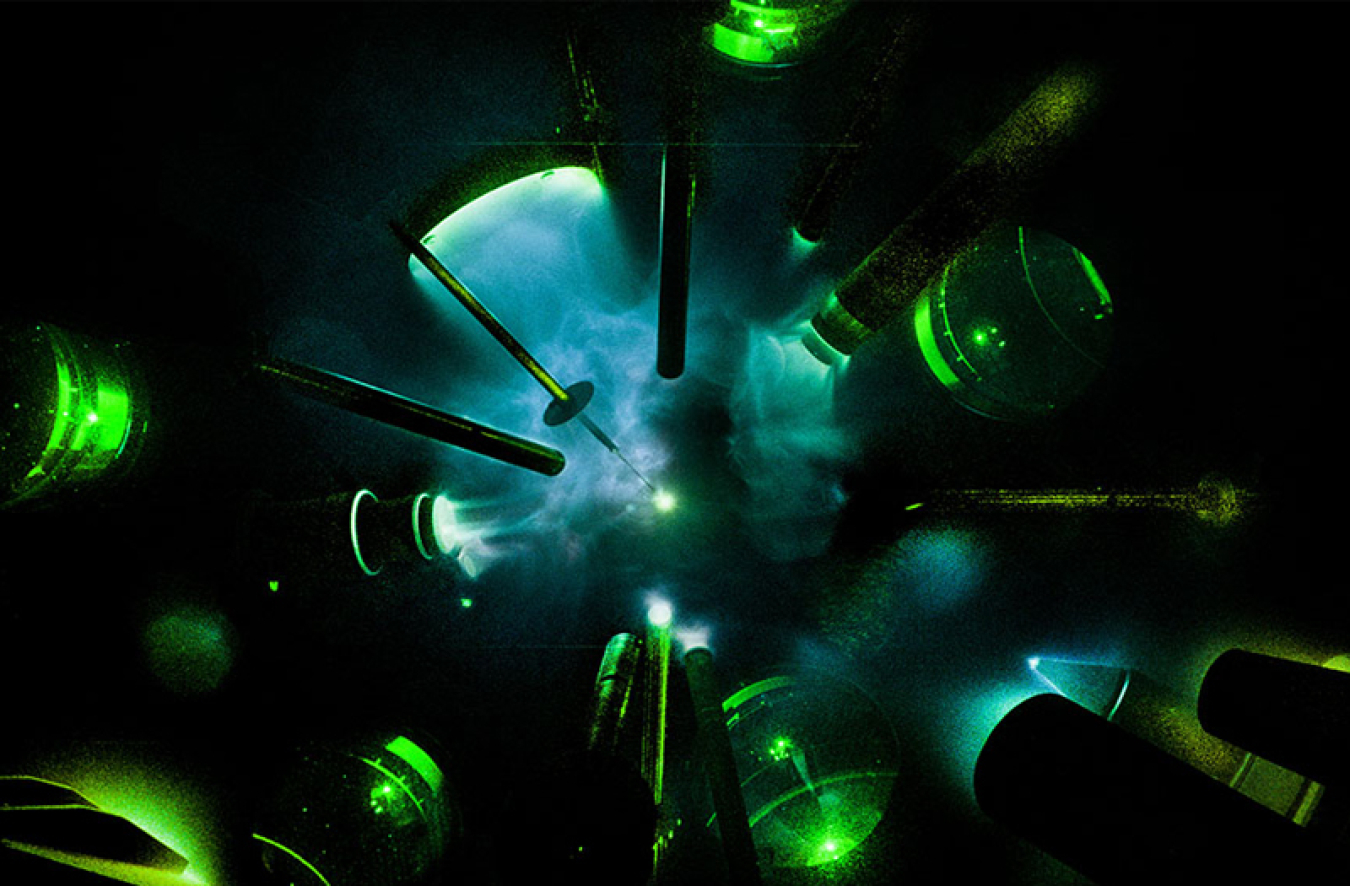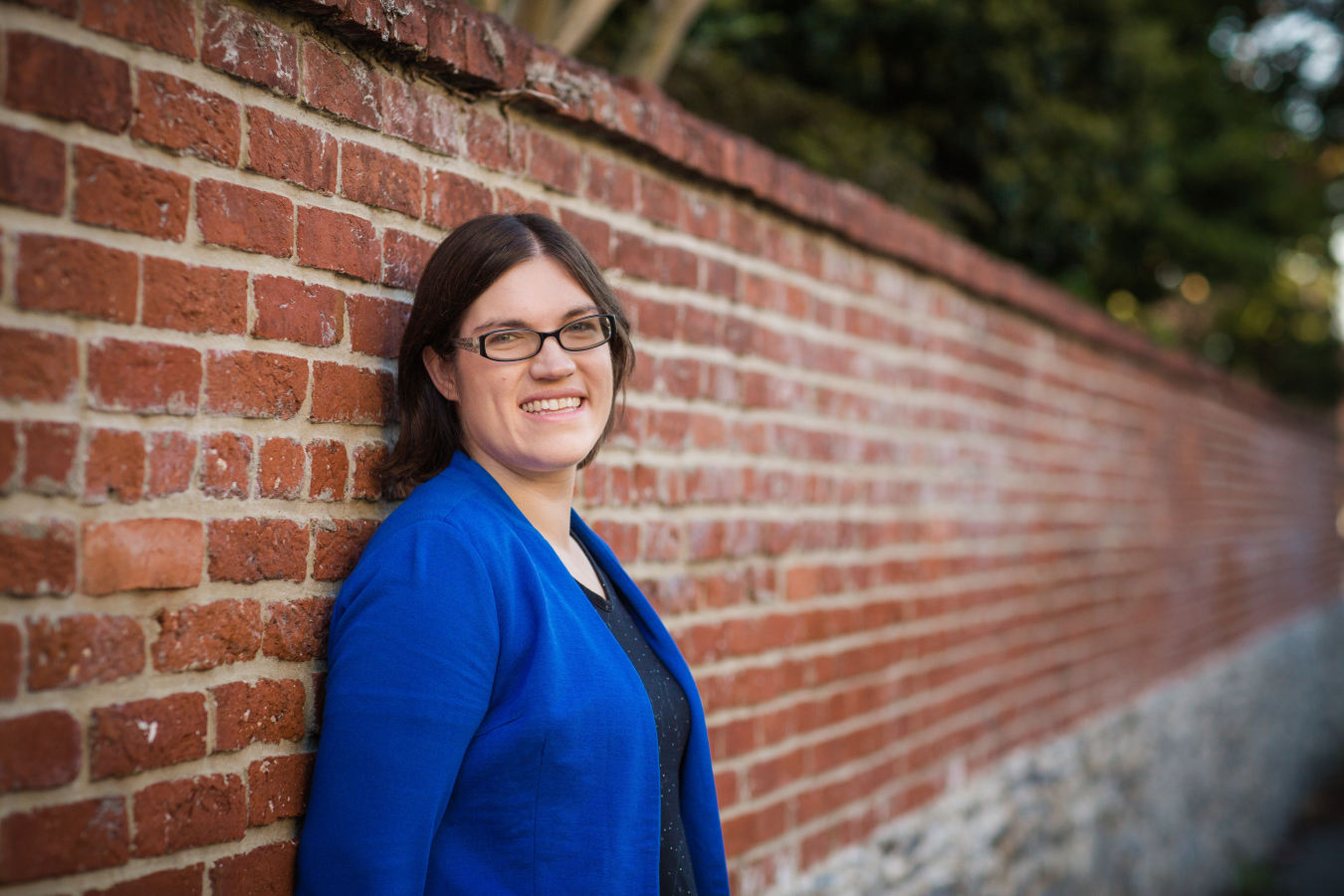The OMEGA experiment at the University of Rochester is helping scientists gain the knowledge we need to establish fusion as an energy source.
August 17, 2023
Imagine 60 extremely high-powered laser beams all aiming at a 1-millimeter ball. They blast into it from 216 feet away. The impact imposes extreme pressures on the ball, which is made up of specific isotopes of hydrogen. The ball implodes, collapsing in on itself at 360 kilometers per second. A controlled fusion reaction ignites. It mimics the very process that powers the sun.
But despite the presence of the lasers and the ball, that’s not what usually happens. Researchers on the OMEGA experiment want to find out why. Fusion could provide a sustainable energy source here on Earth if we can figure out how to start and maintain it.
Part of the challenge is the many complicated factors that keep the lasers from compressing the ball enough to reach the right pressures. For example, the plasma that is needed for the fusion reaction is very unstable.
Understanding the viscosity of the plasma could help scientists untangle some of the barriers to self-sustaining fusion. Viscosity is a measurement of how much a fluid flows. It comes from friction inside of the fluid itself. In the experiment, viscosity in the plasma dissipates energy. As the plasma loses energy, it can’t get hot enough to ignite fusion. If we could better understand the role of viscosity, we could better control plasma and make the process more effective.
While viscosity is relatively easy to measure in everyday liquids, it’s a lot harder to measure in a super-heated ball of hydrogen. Researchers from the University of Rochester’s Laboratory for Laser Energetics and Department of Mechanical Engineering are working with a scientist from DOE’s SLAC National Accelerator Laboratory to do so.
This research could also reveal more about how Earth and other planets formed. In addition to targets made of plastics (like those in fusion experiments), they’ll also use targets made of silica that mimic the rocks in planets.
These experiments could reveal a good deal about Earth’s past as well as enable a more sustainable future.
Shannon Brescher Shea

Shannon Brescher Shea ([email protected]) is the social media manager and senior writer/editor in the Office of Science’s Office of Communications and Public Affairs. She writes and curates content for the Office of Science’s Twitter and LinkedIn accounts as well as contributes to the Department of Energy’s overall social media accounts. In addition, she writes and edits feature stories covering the Office of Science’s discovery research and manages the Science Public Outreach Community (SPOC). Previously, she was a communications specialist in the Vehicle Technologies Office in the Office of Energy Efficiency and Renewable Energy. She began at the Energy Department in 2008 as a Presidential Management Fellow. In her free time, she enjoys bicycling, gardening, writing, volunteering, and parenting two awesome kids.

